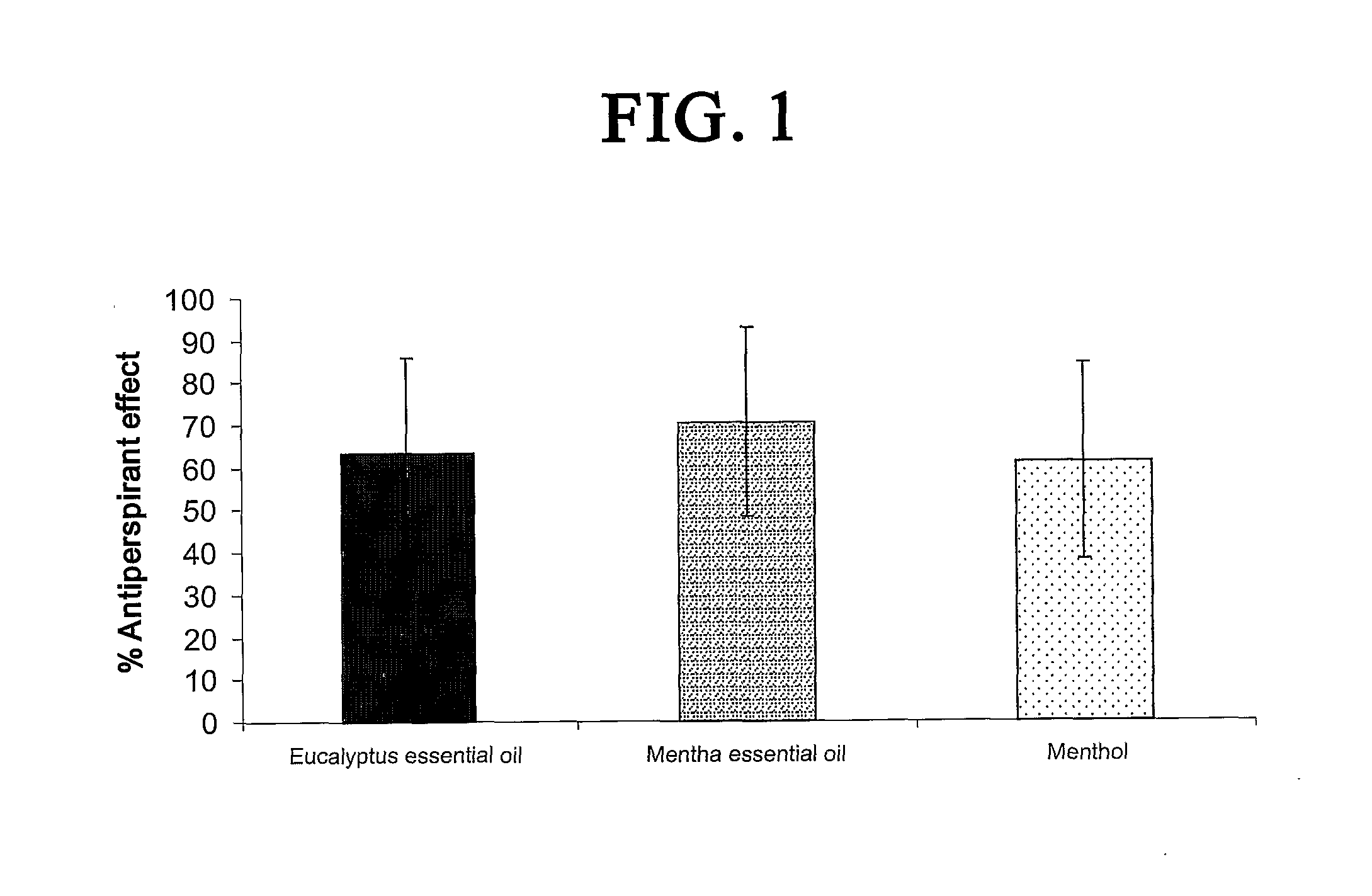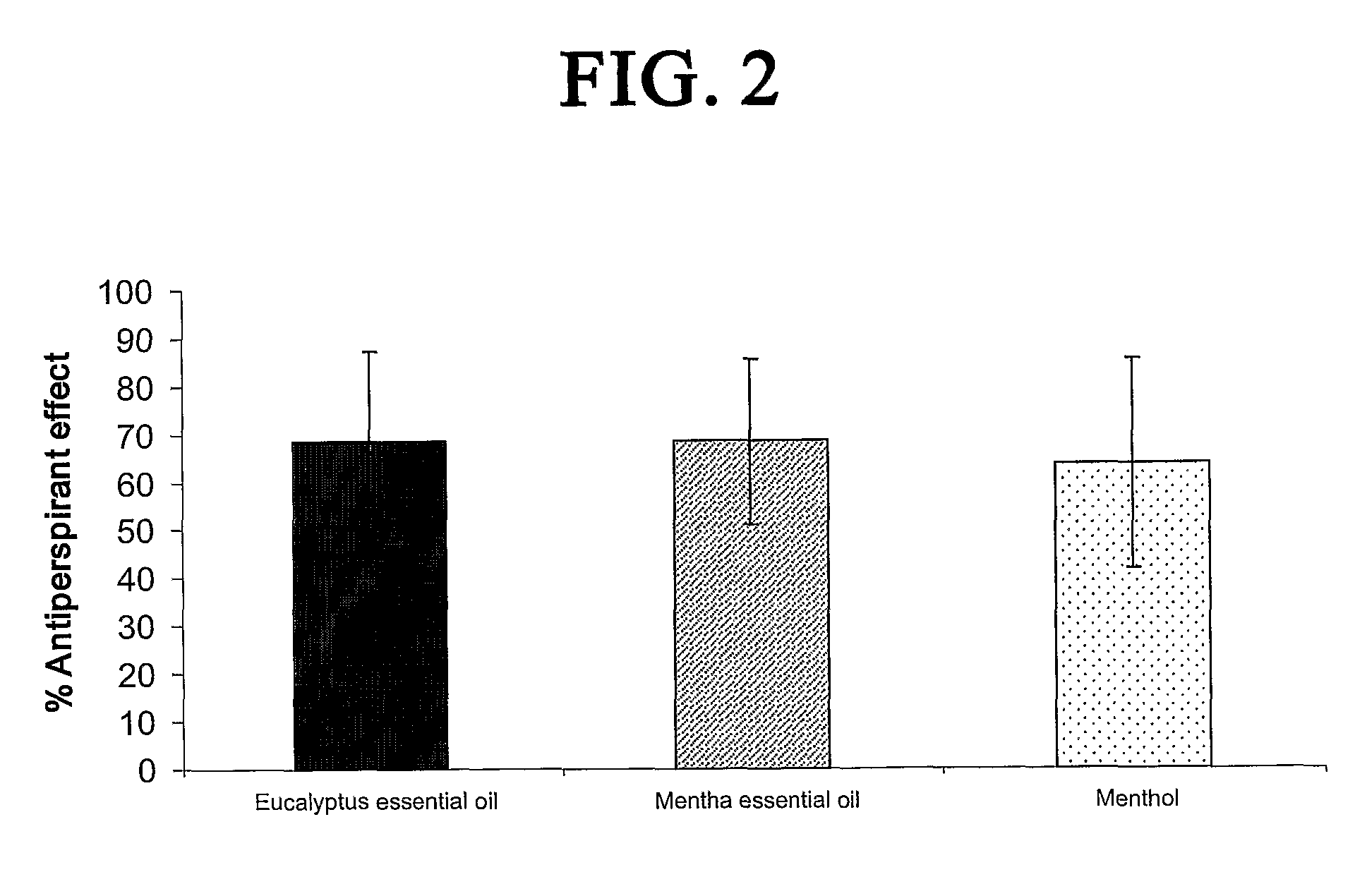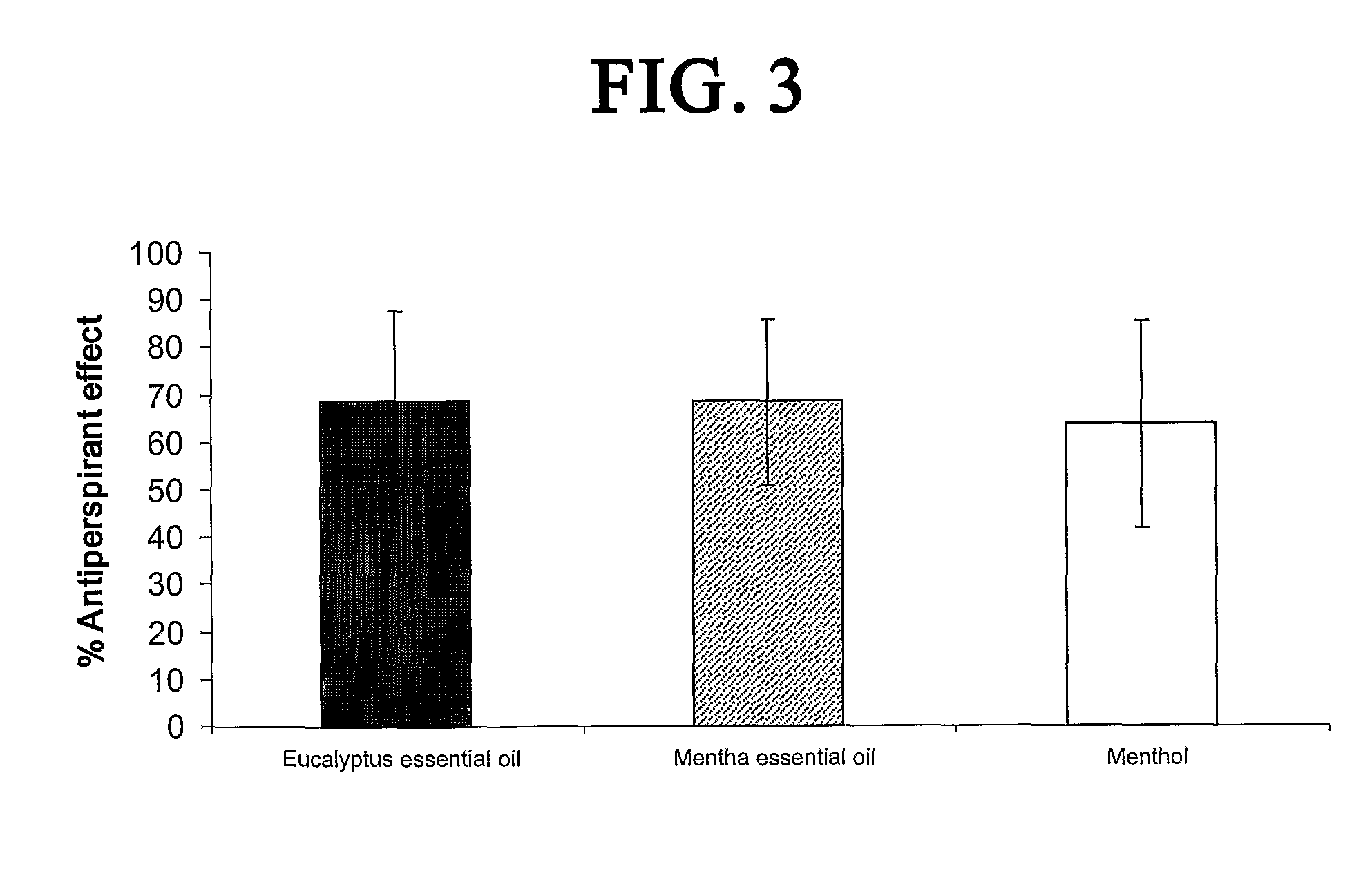Antiperspirant Compositions and Methods for Reducing Perspiration in Humans
- Summary
- Abstract
- Description
- Claims
- Application Information
AI Technical Summary
Benefits of technology
Problems solved by technology
Method used
Image
Examples
example 1
Antiperspirant Composition
IngredientFinal %Water 90-96TRPM8 agonist 0.1-10Dimethicone 0.1-0.9PEG-5 Cocoate, PEG-8 Dicocoate, Iodopropynyl 0.05-0.2butyl carbamate, PEG-4Caprylic / Capric Triglyceride 0.5-2Hydroxypropyl Starch phosphate 0.5-2Octyldodecanol 0.1-0.9DMDM Hydantoin 0.1-0.9Ammonium acryloyldimethyltaurate / PV / Copolyme R, 0.8-3Trilaureth-4 Phosphate, Polyglyceryl-2-sesquiisostearate
When the plant essential oil (e.g. menthol or eucalyptol) was employed to manufacture the antiperspirant composition, the concentration of TRPM8 agonist in said essential oil was measured via GC-MS technique to determine the suitable amount of said essential oil to be used, in order to result in appropriate percentages of TRPM8 agonist in said composition.
example 2
Antiperspirant Effect
The antiperspirant efficacy and safety of investigated compounds were tested pursuant to protocol prescribed by the Food and Drug Administration, 21CFR Part 10.90 (Guidelines for Effectiveness Testing of OTC Antiperspirant Drug Products, 2004). The clinical study further conformed to Normative Resolution 196 / 96, CN / MS. The clinical study was divided into three tests and conducted with among at least thirty healthy female volunteers per test. They were between the ages of 18 and 50. The study was single-center, randomized, controlled, double blind assessment of the safety, tolerability and antiperspirant efficacy of TRPM8 agonists when applied to the axillae of healthy female volunteers.
Before proceeding with the testing, all the volunteers were submitted to a “rest period” of 17 days, according to the FDA protocol. During this period, a placebo control formulation with no antiperspirancy effect was applied twice a day to both axillae.
Treatments were applied once...
example 3
Reactivity Evaluation
According to FDA Guidelines for Effectiveness Testing of OTC Antiperspirant Drug Products (2004), the standard antiperspirant efficacy is demonstrated when at least 50% of the target population obtains a sweat reduction of at least 20%. On the other hand, extra-effective antiperspirant efficacy is demonstrated when at least 50% of the target population obtains a sweat reduction of at least 30%. The reactivity curve was determined for the agonists tested in our clinical trial, and it was observed that 100% of the target population obtained at least 50% of sweat reduction, 4 h after treatment, as shown in FIG. 4, thus demonstrating that the use of an antiperspirant composition comprising TRPM8 agonist led to an extra-effective antiperspirancy efficacy.
PUM
| Property | Measurement | Unit |
|---|---|---|
| Fraction | aaaaa | aaaaa |
| Fraction | aaaaa | aaaaa |
| Fraction | aaaaa | aaaaa |
Abstract
Description
Claims
Application Information
 Login to View More
Login to View More - R&D
- Intellectual Property
- Life Sciences
- Materials
- Tech Scout
- Unparalleled Data Quality
- Higher Quality Content
- 60% Fewer Hallucinations
Browse by: Latest US Patents, China's latest patents, Technical Efficacy Thesaurus, Application Domain, Technology Topic, Popular Technical Reports.
© 2025 PatSnap. All rights reserved.Legal|Privacy policy|Modern Slavery Act Transparency Statement|Sitemap|About US| Contact US: help@patsnap.com



